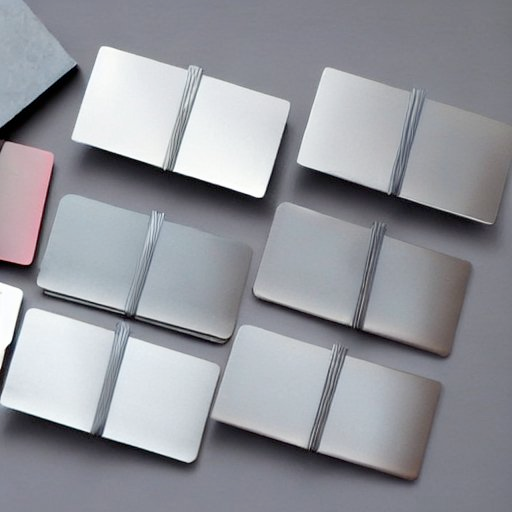316 Stainless Steel: Composition, Properties, and Uses
- Sam Awad
- Jul 28, 2023
- 2 min read
I. Introduction:
316 stainless steel is a versatile and widely used material known for its excellent corrosion resistance, high strength, and various other beneficial properties. It belongs to the austenitic stainless steel family and primarily consists of chromium, nickel, and molybdenum. This steel grade finds extensive applications in industries such as manufacturing, construction, food processing, medical equipment, and even in MRI applications due to its non-magnetic nature.

II. Properties of 316 Stainless Steel:
Here is a table summarizing the technical properties of 316 stainless steel:
Property | Value |
Corrosion Resistance | Excellent |
Strength | High |
Toughness | High |
Magnetism | Non-magnetic |
Biocompatability | Yes |
Temperature Resistance | High |
Fabrication and Forming | Excellent |
Machinability | Moderate |
Thermal Conductivity | 16.3 W/m-K |
Coefficient of Expansion | 16.5 x 10^-6/°C |
Melting Point | 1370-1400 °C |

III. Chemical Composition of 316 Stainless Steel:
The chemical composition of 316 stainless steel is as follows:
Element | Percentage Range |
Carbon (C) | <= 0.08% |
Chromium (Cr) | 16-18% |
Nickel (Ni) | 10-14% |
Molybdenum (Mo) | 2-3% |
Iron (Fe) | Balance (69%) |
Manganese (Mn) | <= 2.00% |
Silicon (Si) | <= 1.00% |
Phosphorus (P) | <= 0.045% |
Sulfur (S) | <= 0.030% |
Nitrogen (N) | <= 0.10% |
IV. Uses of 316 Stainless Steel:
The exceptional properties of 316 stainless steel make it valuable for a wide range of applications:
Food Processing: It is often used in food handling, cooking, and storage equipment due to its durability, ease of cleaning, non-reactivity with food, and resistance to bacterial growth.
Chemical Industry: Its resistance to corrosive chemicals and acids makes it popular in chemical plants and refineries.
Marine Applications: 316 stainless steel's high corrosion resistance in marine environments makes it ideal for boat fittings, marine hardware, and offshore structures.
Medical Equipment: Its bio-compatibility makes it suitable for surgical instruments, medical implants, and even in MRI applications where non-magnetic materials are essential.
Architectural and Decorative Applications: Its potential for a polished surface finish and high luster enhance its visual appeal in architectural and decorative applications.

V. Machinability of 316 Stainless Steel Compared to Other Metals:

When compared to metals like aluminum, brass, or mild steel, 316 stainless steel generally has lower machinability due to its hardness and work-hardening tendency. However, skilled machinists and proper machining techniques can overcome these challenges and achieve efficient results with 316 stainless steel. Despite its lower machinability, the exceptional corrosion resistance and other beneficial properties of 316 stainless steel make it a valuable material in various critical applications.
V. How 316 Stainless Steel is Made:

The most common method for producing 316 stainless steel is through the electric arc furnace (EAF) process. This process involves melting raw materials such as iron ore, chromium, nickel, and molybdenum in an electric arc furnace. The molten steel is then refined to obtain the desired chemical properties. After refinement, the steel is cast into various shapes, such as ingots or continuous casting, and further processed through hot rolling, cold rolling, or other shaping procedures to produce the final product with the desired dimensions and properties.
VI. Is 316 Stainless Steel Magnetic?
No, 316 stainless steel is generally considered non-magnetic. While some changes in its magnetic properties can be induced through certain processes, its primary phase, austenite, is naturally non-magnetic. This non-magnetic nature makes it highly suitable for applications where magnetic interference is a concern, such as in MRI machines.
VII. Conclusion:
316 stainless steel, with its unique composition, exceptional properties, and diverse range of applications, stands as a reliable and valuable material in various industries. Its high corrosion resistance, non-magnetic nature, and ease of fabrication make it a top choice for manufacturers and engineers seeking durable and long-lasting solutions. Whether in marine environments, chemical plants, medical equipment, or architectural designs, 316 stainless steel continues to showcase its versatility and reliability, making it an essential component in modern manufacturing and construction.
For any additional questions on 316 stainless steel, contact the Zero Machining team.
We’re happy to help you with material selection and DFM for your stainless steel parts.




Comentarios